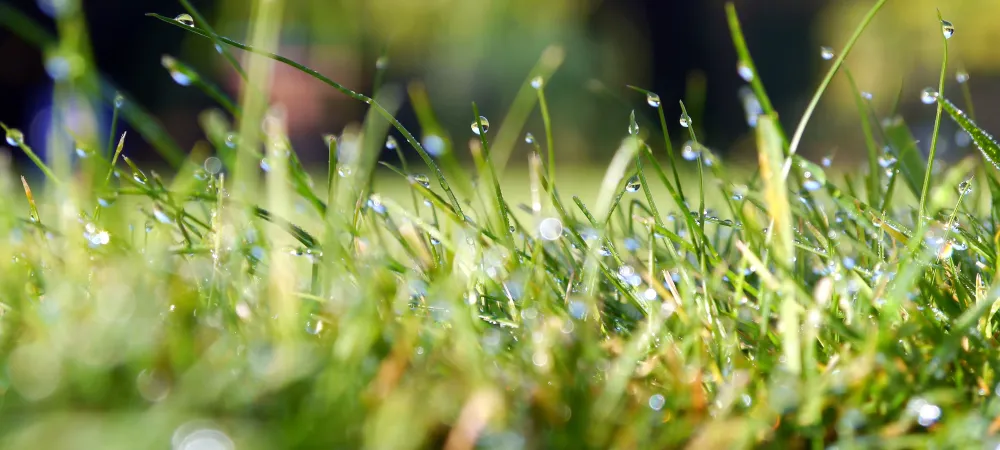
Diagnosing and Solving Athletic Field Drainage Issues
When athletic field drainage fails, the consequences show quickly—muddy patches, standing water, canceled games, and unsafe playing conditions. Proper drainage isn’t just about aesthetics; it’s a fundamental part of athletic field maintenance that protects turf health, extends playability, and preserves the overall integrity of your investment. Whether you manage a natural grass or synthetic surface, addressing field drainage problems early prevents costly repairs and long-term performance decline.
Common Athletic Field Drainage Problems
Poor drainage is one of the most frequent—and frustrating—issues facing field managers.
Visible symptoms often include:
- Soggy, uneven areas that remain wet long after rainfall
- Standing surface water or pooling near goal areas or baselines
- Declining turf quality or bare patches
Root causes can stem from:
- Poor field grading or improper slope design
- Clogged or broken subsurface drainage lines
- Compacted soil restricting water infiltration
- Faulty or outdated drainage installations
Identifying which of these factors is causing your athletic field water issues is the first step toward long-term correction.
Step-by-Step Guide to Diagnosing Drainage Problems
Inspecting the Field
Begin by walking the field after rainfall. Note areas that stay saturated longer than others, as these indicate blocked or inefficient drainage zones. Check for depressions, uneven slopes, and visible signs of erosion.
Visual Assessment Checklist
- Look for surface pooling within 24 hours of rain
- Test soil compaction in problem areas
- Inspect catch basins and inlets for blockages
- Review grading slopes for consistent runoff flow
When to Call a Professional
If symptoms persist despite routine maintenance, a professional evaluation is recommended. At RZ Sports Turf, our specialists perform complete athletic field drainage assessments across the Midwest and Great Lakes region—pinpointing system failures and recommending practical, field-tested solutions.
Best Solutions for Athletic Field Drainage Problems
Every drainage challenge has a specific fix. Proven field drainage solutions include:
- Subsurface Drainage Installation: Installing a Spartan Built-Up Sand-Cap and Subsurface Drainage System allows for consistent water removal beneath the surface, reducing compaction and standing water.
- Field Grading Corrections: Regrading ensures proper slope and even water flow across the field surface.
- Drainage System Maintenance: Routine flushing and cleaning of pipes and inlets prevent future backups.
- USGA Root-Zone Sand Topdressing Programs: Improves permeability and long-term drainage performance for natural turf systems.
Athletic Field Drainage Maintenance Best Practices
Proactive care prevents most major drainage failures.
Suggested Maintenance Calendar:
- Spring: Inspect inlets and outflow pipes; check for winter damage.
- Summer: Monitor turf density and address compaction with aeration.
- Fall: Clean basins and ensure proper grading before winter.
Preventative Measures:
- Maintain healthy root zones with seasonal topdressing
- Keep surface slopes free from debris buildup
- Schedule annual professional inspections
Consistent maintenance keeps drainage systems functioning efficiently—reducing costs, protecting turf, and maximizing play time.
Drainage Considerations by Field Type
Natural Turf Fields:
These rely heavily on soil permeability. Subsurface drainage and sand-cap systems are key to removing excess water and maintaining root health.
Synthetic Turf Fields:
Drainage issues often relate to base material or clogged infill. Routine inspection of underlayment layers and inlets is essential.
Each sport has unique grading and runoff requirements—especially where high-traffic areas, like goal mouths or baselines, trap water. Addressing these areas with targeted grading and drainage design ensures balanced performance.
Frequently Asked Questions about Field Drainage
Will improved drainage reduce field closures?
Yes. Proper drainage significantly cuts downtime after rain events by allowing the field to dry faster and stay playable longer.
How much maintenance is required?
Basic inspections and seasonal cleaning go a long way. Most drainage systems only need professional maintenance once a year.
Can existing fields be retrofitted with better drainage?
Absolutely. Many aging fields in the Midwest have been successfully renovated using subsurface drainage installations and sand-cap systems.
Why Expert Drainage Matters: ROI and Safety
Professional-grade athletic field drainage is an investment in both performance and safety. Efficient systems reduce waterlogging, limit turf disease, prevent player injuries, and extend the field’s usable life. Over time, these improvements save facilities thousands in reduced repairs and fewer cancellations.
Talk to the Experts of Athletic Field Drainage
At RZ Sports Turf, our team specializes in athletic field drainage troubleshooting, renovation, and maintenance across the Midwest. We use proven systems like the Spartan Built-Up Sand-Cap and USGA Root-Zone Sand Topdressing Programs to restore proper function and durability to both natural and synthetic surfaces. From local schools to large sports complexes, our work focuses on long-term performance and reliability.
If you’re facing ongoing drainage or athletic field water issues, contact our field specialists can assess your site for tailored solutions to restore safety and playability.